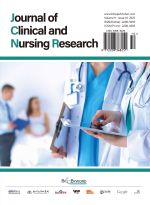The Application of TCM’s “Preventive Treatment of Diseases” Concept in Daily Hospital Infection Management
Abstract
With the development and popularization of modern medicine, the importance of daily hospital infection management has been continuously enhanced, making it a key approach to improving hospital safety standards and safeguarding patients’ lives. This paper explores the core connotation of the “Preventive Treatment of Diseases” concept in Traditional Chinese Medicine (TCM) and integrates it into the practice of modern hospital infection management. On one hand, it analyzes the current dilemmas in daily hospital infection management from dimensions such as frequent personnel flow, difficulties in disinfection and isolation, risks of antimicrobial abuse, and limited awareness of medical staff. On the other hand, it proposes the application scope of TCM’s “Preventive Treatment of Diseases” concept from aspects including preventive culture, environmental infection control, early warning mechanisms, and health education. Based on this, a more forward-looking, systematic, and humanistic hospital infection management system is constructed to achieve the transformation from passive response to active intervention.
References
Wei X, 2024, Application of Fall Risk Classification Nursing in Fall Prevention Management for Elderly Inpatients in Internal Medicine Department. Chinese Journal of Health Care and Rehabilitation, 42(10): 134–137.
Chen X, 2023, Study on the Current Situation and Influencing Factors of Nursing Intervention Behaviors for Inpatient Falls, thesis, Central South University.
Chen H, Wang L, Dong Y, et al., 2022, Analysis of Disease Burden of Fall-Related Deaths and Its Impact on Life Expectancy in Wuxi City from 2008 to 2019. Modern Preventive Medicine, 49(16): 3040–3044.
Wu D, Zhong M, Lin H, 2022, Investigation and Analysis of Nurses’ Risk Management Ability for Inpatient Falls. Today Nurse (Mid-term Edition), 29(07): 133–135.
Guan X, Lu A, 2022, Practice and Effect of Improving Compliance with Fall Prevention in High-Risk Inpatients. Life Science Instruments, 20(S1): 105.
Shang M, Han M, He H, et al., 2021, Application of Nursing-Sensitive Quality Indicators in Continuous Improvement of Fall and Fall-from-Bed Prevention for Hospitalized Children. Journal of Nursing Administration, 21(10): 702–706.
Wang L, 2021, Effect of Nursing Intervention on Compliance with Fall Prevention in Neurosurgery Inpatients. Medical Diet and Health, 19(03): 119–120.
Ji A, 2021, Analysis on the Application Effect and Significance of Fall Prevention Nursing Risk Management in Psychiatric Inpatients. China & Foreign Medical Treatment, 40(01): 175–177.
Chen G, 2020, Practice and Effect of Nursing Risk Management in Preventing Falls of Elderly Inpatients. Smart Healthcare, 6(19): 182–183.
Yang M, 2020, Discussion on the Role of Fall Risk Classification Management in Fall Prevention Nursing Management of Open Wards in Neurology Department. China Health Industry, 17(11): 24–26.
Zhang X, Min H, Zhang L, et al., 2024, Application Effect of Fall Prevention Nursing Risk Management in Psychiatric Inpatients. Famous Doctors, 2024(18): 104–106.
Li Y, Cao J, Shen L, et al., 2020, Establishment and Implementation of Fall Prevention Management Model for Inpatients in Rehabilitation Hospitals. Today Nurse (Mid-term Edition), 27(02): 156–158.
Zhang X, 2020, Effect of Nursing Risk Management in Preventing Falls and Falls from Bed in Elderly Patients. China Modern Medicine, 27(03): 251–253.
Zhang Y, 2019, Application of Risk Management in Preventing Falls of Elderly Inpatients in Primary Hospitals. Journal of Clinic Nursing’s Electronic Edition, 4(45): 177 + 183.
Zhang W, Liu Y, Yu M, 2019, Investigation and Analysis of Knowledge-Attitude-Behavior Level of Fall Prevention in Inpatients Among New Nurses. Journal of General Nursing, 17(01): 112–114.


